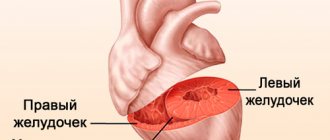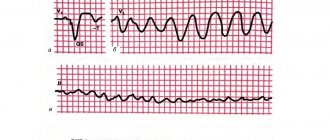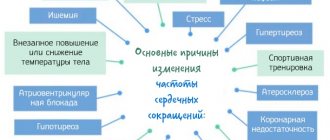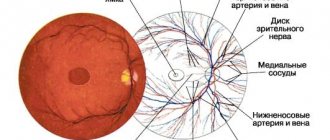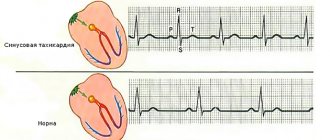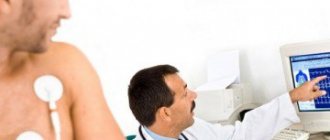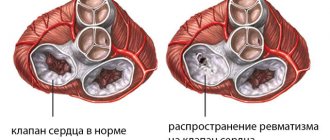Arterial hypotension (hypotension) is a long-term condition characterized by low levels of systolic (upper) and diastolic (lower) pressure. The numbers do not exceed 100 and 60 mmHg. Art. respectively.
There is still no consensus on whether arterial hypotension should be considered a disease. Some doctors consider this condition to be a disease, since hypotension causes a fairly large complex of clinical symptoms and requires treatment.
Their opponents consider arterial hypotension to be a physiological property of a particular organism, since a long-term decrease in blood pressure does not cause pathological changes in the body and does not lead to serious consequences, such as hypertension.
Reasons for development
Depending on the form, arterial hypotension can be caused by the following reasons:
- In trained athletes (physiological hypotension)
- Adaptation to high altitude conditions (physiological hypotension), as well as hot workshops, tropics and subtropics (in these cases may be associated with excessive sweating)
- A sharp decrease in circulating blood volume (blood loss, burns)
- Heart failure
- Decreased tone of blood vessels (anaphylactic shock, septic shock)
- Brain and spinal cord injuries
- Neuroses, psychological trauma, chronic lack of sleep, chronic fatigue due to an imbalance in the ratio of hours of rest and work, stress, depression and other apathetic and depressed states.
- Orthostatic hypotension is a sudden drop in blood pressure that occurs when a person stands up after prolonged squatting or lying down.
- Sepsis.
- Disruption of the normal functioning of the endocrine system.
Fluctuations in blood pressure at rest up to levels of hypotension are usually considered as a separate hypotonic type of somatoform autonomic dysfunction of the heart and cardiovascular system (a disorder in which the autonomic regulation of arterial tone is disrupted), but can also be a manifestation of panic disorder and other neuroses and mental disorders. disorders.
Secondary chronic arterial hypotension occurs against the background of such diseases as: brain injuries, decreased function of the thyroid gland, adrenal glands, pheochromocytoma, etc., intracranial hypertension (can be a consequence of not only head injuries, but also rotational subluxation or dislocations of the C1 cervical vertebra (with (old) birth, obstetric injuries, due to accidents in children and adults, including somersaults, sometimes just a careless sharp turn of the head)).
Arterial hypotension can occur during pregnancy and is characterized by low arterial tone.
Symptoms and facts
If blood pressure is low, this does not mean that a crisis has occurred. VSDs prone to the hypotonic type of dystonia almost constantly have low blood pressure. Even visually, hypotensive people stand out from the crowd. They are slow, passive, pale, often touch their forehead and temples, wear an indifferent expression on their faces, and they also constantly yawn and get carsick. The thing is that with hypotension, vascular tone is reduced, blood circulation is poor, the body lacks oxygen, which means all body functions are reduced.
Hypotonic crisis means a sudden deterioration of the condition to critical with a sharp decrease in blood pressure.
And although an attack can occur with any type of VSD, it is “hypotonic” dystonics that are most susceptible to it. During such an event, the parasympathetic part of the autonomic nervous system is activated, which is responsible for muscle relaxation, healthy sleep and natural digestion. These functions are the exact opposite of those performed by the sympathetic department of the autonomic system. And therefore, hypertensive patients and panickers see in their “opposite” brothers only cheaters, suffering out of the blue. And this is a big misconception. A dystonic person with a parasympathetic crisis sometimes suffers even more than a typical “adrenaline” patient.
Symptoms of a hypotensive attack:
- There is a sharp, noticeable weakness; It becomes difficult to do ordinary things.
- Dizziness, unsteadiness and poor coordination.
- The man breaks out in profuse sweat.
- The limbs freeze, it becomes cold.
- The heart rhythm is disturbed (tachycardia, bradycardia or extrasystole are observed).
- The patient may feel the urge to have a bowel movement (these are parasympathetic tricks).
- Restlessness and irritability occur.
- A person is drawn to sleep, but internal tension does not allow him to fall asleep (as a result, the patient sits idle in a closed, depressed state).
- Sometimes headaches and/or cardiac pain, a feeling of fullness in the temples, a lump in the chest, and difficulty breathing are added to the symptoms (but these symptoms of a hypotensive crisis are already secondary and caused by fear).
An attack of hypotension is provoked by the following factors:
- changes in weather conditions (the most common reason);
- overwork (both physical and moral);
- stress and depression;
- prolonged physical passivity, lack of warm-ups, walks, sedentary lifestyle.
With VSD, the so-called “causelessness” of attacks is also characteristic, when, out of the blue, the VSD sufferer suddenly gives up everything he’s doing and freezes with his hand over his heart. But in fact, the central nervous system always has a good reason to launch its next game. VSD is primarily a disease of the subconscious, and what happens in it will always be hidden from our understanding. Meanwhile, it is the subconscious that influences any human actions and somatic diseases.
Secondary hypotension
If primary hypotension is considered an independent disease, then the secondary form is a consequence of other systemic diseases:
- pathologies of the cardiovascular system (cardiovascular system);
- osteochondrosis of the spine (cervical spine);
- previous brain injuries;
- diseases of the gastrointestinal tract (gastrointestinal tract);
- respiratory diseases;
- diabetes;
- malignant/benign neoplasms;
- circulatory dysfunction;
- alcoholism;
- the result of long-term use of medications.
Mechanisms for maintaining constant blood pressure levels
Hypotension is dangerous and affects the condition of the entire human body, since the blood flow ensures constant delivery of oxygen and other nutrients to cells and tissues. The level of blood pressure in a person is the main criterion for assessing the state of the cardiovascular system. Its value can be regulated by a large number of factors. This:
- elasticity of the vascular wall and its tone;
- the total volume of blood in the body, the amount of blood that the heart usually pumps out with each contraction;
- rheological properties and physicochemical environment of blood;
- the functioning of the respiratory system (the level of pressure created in the chest and abdominal cavity);
- state of the nervous system.
Both hypotensive and healthy people have been familiar with the cherished numbers 120/80 since adolescence. The upper (larger) norm means systolic pressure. During the contraction of the heart, about 70 ml of blood is pushed out of it. Such a volume cannot pass through the capillaries, so the aorta and other large vessels are stretched. They create pressure, which on average can be 110 - 140 mm Hg.
During relaxation (diastolic phase), depending on the diameter of the vessel, the “lower” pressure drops to 70 – 90 mmHg. The difference between these values is perceived as a pulse. In the capillaries and small branches of the circulatory system, the pressure continues to decrease, usually to 10 - 15 mm Hg. It is not possible to accurately measure these numbers.
Currently, blood pressure levels are determined using the method proposed in 1905 by Russian doctor N.S. Korotkov. With a decrease in tone in the circulatory system, cardiovascular hypotension develops. If the values, on the contrary, are elevated, they speak of hypertension. It is usually accompanied by headaches and a number of other symptoms.
Acute arterial hypotension
The acute form of hypotension, characterized by a rapid decrease in blood pressure, is considered the most dangerous. A sharp decrease in blood flow can negatively affect all organs, especially the brain, which is the largest consumer of blood. Oxygen starvation can cause fainting, arrhythmias and other health-threatening conditions that require immediate response from the patient or others.
The reasons for a sharp drop in blood pressure (blood pressure) can be different - banal food/chemical poisoning, infections, blood poisoning, dehydration.
Differential diagnosis
The differential diagnosis of primary and secondary arterial hypotension is based practically on the exclusion of various pathological processes (primarily occupational hazards) leading to a persistent decrease in blood pressure. Thus, the normalization of the latter after identifying and sanitizing foci of chronic infection confirms the symptomatic nature of arterial hypotension. In the absence of indications of pathological changes in internal organs, a thorough examination of the patient by an endocrinologist and psychiatrist is advisable.
Symptoms of hypotension
The main symptoms of hypotension are quite vague, they can also indicate other diseases. Therefore, if they occur, you should definitely consult a doctor. Typically, the following signs indicate low blood pressure:
- severe dizziness, headache, weakness;
- sleep disturbances, constant fatigue, irritability;
- the skin is constantly white, the fingertips may turn blue;
- various disturbances of the heart, shortness of breath, darkening of the eyes with sudden movements.
Often, patients with hypotension have symptoms such as a feeling of heaviness in the epigastrium, a bitter taste in the mouth, decreased appetite, belching, heartburn, flatulence, and constipation.
Signs of acute hypotension
The acute form of arterial hypotension occurs with severe oxygen starvation of the brain tissue, which results in the development of symptoms such as:
- dizziness,
- short-term visual impairment,
- unsteadiness of gait,
- pale skin,
- fainting.
Symptoms of the chronic form
In chronic secondary arterial hypotension, the symptoms of the underlying disease come to the fore. In addition, patients experience:
- weakness,
- apathy,
- drowsiness,
- increased fatigue,
- headache,
- emotional lability,
- memory impairment,
- thermoregulation disorders,
- sweating of the feet and palms,
- tachycardia.
Long-term arterial hypotension causes disturbances in the menstrual cycle in women and potency in men.
Orthostatic hypotension
Orthostatic hypotension is very common - a sharp decrease in blood pressure when changing body position. This is a fairly common condition among teenagers, when a growing body requires more intensive vascular work.
Standing or standing upright for long periods of time may cause insufficient blood flow to the brain.
As a result, the pressure drops, dizziness occurs, the vision becomes dark, and fainting may occur. In people with hypotension, with increased physical activity, the heartbeat and pulse increase, shortness of breath and discomfort in the heart area may occur. Most often, a deterioration in well-being in hypotensive patients is observed after infectious diseases and colds, as well as in the spring and summer periods of the year.
Symptoms
Hypotonic patients often experience dizziness, drowsiness, fatigue, and depression. An attack of hypotension begins with severe weakness, “spots” appear before the eyes, objects blur, and tremor of the limbs may be observed.
Symptoms of an attack of hypotension are:
- dizziness,
- "legs give way"
- darkness before the eyes,
- a sharp and quite severe headache, especially severe in the temporal region,
- pale skin,
- nausea and vomiting,
- weak pulse, which may not be palpable at all,
- fainting.
Important! An attack of hypotension occurs suddenly and can also disappear suddenly, but even if the patient’s condition has improved, this condition should not be ignored or consulted with a doctor, since secondary hypotension can be a symptom of serious health problems.
How to treat hypotension?
In most cases, drug treatment for hypotension is not required. The most common causes of low blood pressure are poor lifestyle and stress. Physiological hypotension should not be treated, but it must be remembered in order to prevent pressure surges. If you are worried about one symptom of hypotension, for example, drowsiness, then, first of all, it is worth adjusting your daily routine. This alone is enough to cope with an unpleasant condition. You can call on traditional medicine to fight hypotension.
If hypotension is caused by neurological disorders or defects of the cardiovascular system, then treatment should be prescribed by a doctor. If a person observes symptoms of low blood pressure for a long time, then he should definitely contact a cardiologist or neurologist so that he can conduct an examination and prescribe the necessary pills, as well as give recommendations for lifestyle changes.
Remember that hypotension is usually not an independent disease, but is a consequence of other pathologies. And the main principle of treating secondary hypotension is correction of the underlying disease:
- For endocrine diseases, the doctor will prescribe hormonal medications.
- If you have anemia, you will be advised to take iron and/or vitamin supplements.
- In case of heart defects, it may be advisable to operate on the patient. Low blood pressure occurs with aortic regurgitation and with mitral valve stenosis (narrowing of the opening that connects the left atrium and ventricle).
Hypotension is treated directly according to the following general scheme:
- Initially, you should follow the general recommendations, then add sports.
- If the effect is insufficient, then doctors recommend using aromatic oils and herbal remedies.
- If these treatment measures are ineffective, the doctor may prescribe medications.
What to do if you have hypotension?
If your blood pressure is low, you need to exclude the presence of diseases. In their absence, it is recommended to adhere to the following tips:
- You need to get enough sleep. Moreover, a night's rest should last 8-9 hours. If this process is disrupted, you can take medications to normalize proper sleep.
- After waking up, you should not get up suddenly, as you may suddenly lose consciousness. You should first do a light warm-up of your arms and legs, after which you take a sitting position for a few minutes and only then get up.
- It is recommended to carry out hardening and water procedures.
- It is useful to exercise and move as much as possible.
- You need to eat right and be sure to have breakfast.
- In the morning, 7-10 minutes can be devoted to exercise.
If a person experiences a fainting condition, it is necessary to lay him down and elevate his legs. The head should be positioned slightly lower than the body. This should increase blood flow to the brain. After this, you should massage your neck and apply a cold compress to your forehead. Such actions help increase blood pressure.
Drug treatment
If treatment of the underlying disease is not enough, or the hypotension is primary, then doctors prescribe groups of medications that are presented below:
| Group of drugs | Effects | Features of application |
| Caffeine preparations | Increases blood pressure Stimulates mental and physical activity Reduces drowsiness | Used in small doses |
| Drugs such as midodrine | Increases blood pressure. Does not affect heart rate | Actively used for orthostatic hypotension, for the treatment of children and adolescents |
| Nootropic drugs | Combined effects: psychostimulant and sedative | Improves nutrition of brain cells |
| Group of cerebrovascular drugs | Improves blood supply to the brain | Used for injuries of the central nervous system |
Symptoms of acute low blood pressure (hypotonic crisis)
A long stay in a hot, unventilated room, stress, and concomitant infections that weaken the body can provoke a deterioration in a person’s condition. Also, a similar course is characteristic of a disease that occurs according to the orthostatic type. Such a complication is a hypotensive crisis. It manifests itself as a sequence of symptoms:
- The skin turns pale.
- Dizziness begins, the patient complains of tinnitus, darkening before the eyes.
- There is severe weakness and discomfort in the stomach area.
- A person faints (syncope). This is a loss of muscle tone, which is accompanied by inhibition of the cardiovascular and respiratory systems.
- In an unconscious state, there may be a violation of postural tone, that is, cramps of both arms or legs.
This is very dangerous if urgent measures are not taken to prevent acute hypoxia and possible cardiac arrest. Hypotonic crises have a particularly negative impact on the health of children and adolescents. In pregnant women, they can cause disturbances in blood flow in the vessels of the placenta and oxygen starvation of the fetus. For this reason, a hypotensive person prone to attacks should undergo regular examinations and take appropriate medications.
Treatment of hypotension without drugs
According to the recommendations of the World Health Organization, 75% of patients with this pathology should be treated with any non-drug means.
- Hydrotherapy, which has a tonic effect on vascular tone, the prescription apparatus of the skin and has a positive effect on the immune system: Vichy shower, Scottish, fan, circular shower, mineral, radon, iodine-bromine baths, hydromassage, the use of contrasting temperatures.
- Massage of the calf muscles, hands, and neck-collar area, eliminating headaches, heart pain, and emotional lability.
- Autogenic training, meditation, etc. Psychotherapeutic techniques make it possible to change the attitude towards psycho-emotional factors of traumatic action and increase tolerance to them.
- Exercise therapy with individual selection of exercises that do not require much physical activity - Bodyflex, gymnastics, fast walking, jogging, etc.
- Aeroionotherapy – inhalation of ozone-enriched air. Stabilizes blood pressure, improves microcirculation.
- Electrosleep with individual selection of pulse frequency increases vascular tone.
- Electrophoresis on the cervical-collar area with solutions of caffeine, mesatone - eliminates dizziness and fainting (more about the indications and contraindications of electrophoresis).
- Acupuncture, leading to the normalization of neurovegetative interactions and improving blood microcirculation.
- Aromatherapy massage using tonic and stimulating oils: anise, orange, basil, clove.
- Soft hardening – contrast shower, cool foot baths
- Quitting bad habits: smoking and alcohol
- Elimination of stress and psychological trauma
Normalization of daily routine and lifestyle
A particularly important point for representatives of sedentary professions, which includes:
- 9-11 hours of sleep at night, during which synchronization of the body’s biorhythms is possible;
- getting out of bed smoothly without sudden movements;
- morning exercises;
- cold and hot shower;
- swimming, gymnastics;
- walks in the open air;
- breaks during the working day for 5-10 minute rest.
Normalization of nutrition
Includes frequent meals with enough protein, salt and spices. The sodium in salt binds water, thereby increasing the total volume of circulating blood. Spices stimulate the work of the endocrine glands and constrict blood vessels. It is recommended to drink natural ground coffee or strong tea (see the dangers of tea bags) in the morning, but you should not abuse it, since a pathological reaction of blood vessels may develop in the form of dilation instead of narrowing, which means an even greater drop in blood pressure. Products that increase blood pressure:
- hot and spicy dishes;
- spices (cloves, pepper, horseradish, mustard);
- cheese, fatty meats and fish;
- sweets, chocolate.
First aid for an attack of hypotension
If a person suffers from acute hypotension, his loved ones should know how to help during an attack. It must be said right away that with a sharp drop in blood pressure, no tinctures or medicinal herbs will help. When the first symptoms appear, it is necessary to give the patient coffee or strong tea (but not green, but black), or better yet, tablets of sodium caffeine benzoate, or at least Citramon (since this drug also contains caffeine). If possible, simple physical activity, such as squats, is recommended.
Diuretics should not be given during an acute attack of hypotension, as this can worsen the patient’s condition and cause convulsive contractions of the arm muscles. The only indication for the use of such drugs is overhydration. If a person does not get better, he cannot stand on his feet, it is necessary to call an ambulance. Further emergency medical care will be provided in a hospital setting.
Folk remedies
Treatment with folk remedies for hypotension is very effective. There are many herbal preparations that increase vascular tone and thereby improve the well-being of hypotensive patients. Such plants include:
- Ginseng;
- Echinacea;
- Chinese lemongrass;
- Eleutherococcus;
- Rhodiola rosea.
It is worth taking these herbal preparations in the absence of contraindications according to the usual regimens indicated on the package.
It is believed that freshly brewed coffee can help prevent low blood pressure. Indeed, the invigorating effect of caffeine has been proven. But, firstly, it is contained much more in green tea, and secondly, caffeine becomes addictive quite quickly, therefore, the therapeutic effect will disappear.
With a general decrease in tone and the so-called blues, St. John's wort can have a slight antidepressant effect, sufficient to treat hypotension.
Treatment
Arterial hypotension can be diagnosed by daily blood pressure monitoring. The pressure is measured several times a day, and each time the pressure must be measured three times with an interval of three minutes.
To exclude secondary hypotension, it is necessary to undergo a thorough examination for the presence of pathological processes in the body. It is necessary to do an ECG, donate blood for a biochemical analysis, and consult with an endocrinologist, neurologist, or cardiologist.
Treatment of the disease is carried out in the following areas:
- general strengthening of the body,
- increased blood pressure in the arteries,
- normalization of vascular tone.
The complex of treatment measures includes:
- psychotherapy,
- massages (especially the collar area),
- hydrotherapy (hydromassages, aromatic baths, Scottish showers, etc.),
- physiotherapeutic procedures (electrosleep, electrophoresis),
- exercise therapy,
- acupuncture,
- aeroionotherapy.
Medication
As for medications, the following are used:
- herbal preparations that improve the overall tone of the body - tincture of ginseng, aralia, lemongrass,
- cerebroprotectors that improve blood circulation in the brain - Vinpocetine, Cinnarizine,
- nootropics – Glycine, Piracetam,
- vitamins – A, B, C, succinic acid,
- antidepressants and tranquilizers.
Folk recipes
Folk remedies are also actively used in the treatment of the disease:
- decoctions of lemongrass, elecampane, tansy, tartar - drink several times a day,
- tinctures of Leuzea, Eleutherococcus - take long-term in accordance with the instructions,
- baths made of spruce or fir needles,
- eat a few mulberries every day,
- introduce chocolate, black tea and coffee into your diet (within reasonable limits).
Important! Before you start taking folk remedies, you need to consult a doctor. Especially during pregnancy - many folk remedies have contraindications!
In this video you can learn in more detail about what actions to take in case of hypotension:
Forecast
If low blood pressure is caused by brain tumors or a severe stage of heart failure, a rare rhythm, serious injuries (car accidents), bleeding, then the prognosis is determined by the success of treatment of the underlying pathology.
In general, the prognosis is favorable; in all patients, in the absence of serious concomitant diseases, it is necessary to eliminate the manifestations of the disease that cause inconvenience in life. All these patients lead a normal and active lifestyle. If symptoms of hypotension are diagnosed in children or adolescents, then there is a high probability of normalization of blood pressure numbers after 25 years (more than 70% of cases).
Diagnosis of various forms of hypotension
The diagnosis of hypotension is never made after a single blood pressure measurement. This manipulation is carried out several times, at a comfortable temperature, when the person is in a calm physical and emotional state. If a persistent decrease in pressure levels below normal is detected, vegetative-vascular dystonia of the hypotonic type is assumed. The further diagnostic process is carried out according to the following algorithm:
- Taking an anamnesis, which includes a survey about the patient’s condition and complaints, the course of the mother’s pregnancy, the doctor is interested in whether there are cases of hypo- or hypertension in the family.
- It is necessary to do an electrocardiogram (ECG), ultrasound (EchoCG) and daily blood pressure monitoring (ABPM). This allows you to identify arrhythmias associated with heart failure, bradycardia or tachycardia, sick sinus syndrome. Sometimes an ultrasound examination of the heart is performed through the wall of the esophagus.
- Registration of an electroencephalogram (EEG) to study the activity of signals coming from the brain, examination of the vessels of the retina, to exclude pathologies such as angiopathy.
- The tilt test can detect orthostatic hypotension. To do this, use a device that, with a frequency controlled by a doctor, brings the patient’s body into a horizontal and then an inclined position.
- The exercise test allows you to evaluate the corresponding reactions of the blood vessels and pulse rate.
- Clinical and biochemical blood tests (detect signs of anemia, determine the level of cholesterol, glucose, electrolytes, etc.).
A parameter such as psychosomatics is assessed. This allows us to identify the patient’s nervous state and his tendency to have a violent emotional reaction. Sometimes the following test is recommended. The person is placed on his back, the cardiograph leads are connected, and light pressure is applied to the closed eyes. Depending on the decrease in heart rate, the severity of symptoms of hypotension is determined.
The disease is chronic and can cause various complications. Therefore, after making an accurate diagnosis, consultation and constant monitoring of related specialists is necessary. All of the above examinations are repeated during the treatment process. This is necessary to assess its effectiveness and possible correction.
Prevention
The best way to prevent hypotension is an active lifestyle. A balanced diet, regular physical activity (exercise, going to the gym), and proper rest will help normalize blood pressure.
To strengthen vascular tone, water procedures are recommended: contrast showers, swimming. Positive emotions, lack of stress, psychotherapy for depressive and hypochondriacal conditions will also help prevent the occurrence of hypotension
Hypertension Hemorrhagic cerebral stroke Microstroke Glaucoma Increased intraocular pressure: symptoms, causes and treatment Hydrocephalus of the brain in children
Complications of hypotension
Particular attention should be paid to pregnant women with symptoms of hypotension, because Insufficient oxygen in the blood leads to oxygen starvation of the fetus, which can lead to poor growth or abnormal formation.
Sometimes, if hypotension is treated incorrectly, this disease can develop into another disease - hypertension (arterial hypertension, or high blood pressure), but with complex etiology and symptoms, which makes its treatment difficult.
With an exacerbation of arterial hypotension, a person may experience cardiogenic shock, in which the pulse is weakened, pressure is not determined, urination is suppressed, and fainting. First aid for this condition is to put the person in a horizontal position, provide an influx of fresh air and immediately call an ambulance.
The most important complication of hypotension is stroke and heart attack, which can be fatal.
Prevention of arterial hypotension
To prevent low and low blood pressure from bothering you throughout your life, try to adhere to the following recommendations:
— periodically measure your blood pressure, keep a log of measurements; — visit a cardiologist periodically; - try to lead an active lifestyle; - eat mainly foods enriched with vitamins, or take vitamin complexes; — maintain a day/night, work/rest routine; - get enough sleep; - avoid stress, think about changing jobs if necessary; — strengthen your body by hardening and moderate physical activity; — saturate your life with positive emotions. Remember, “A merry heart does good as medicine, but a broken spirit dries up the bones” (Bible, Proverbs 17:22).
Description
If we talk about hypotension in the muscles of blood vessels, this condition is usually called arterial hypotension. In this case, there is a regular decrease in blood pressure by 20% or more from the normal value of 110/70 mm Hg. Art.
The main signs of hypotension: darkening of the eyes, general weakness of the body.
The main danger of arterial hypotension is oxygen starvation of tissues, organs and the brain, since blood circulates very slowly, not having time to deliver nutrients in a timely manner.
Hypotension is mostly a female disease. There are also positive aspects; people suffering from this disease live on average 15 years longer than the average person. Because the chronic or congenital form does not allow vascular atherosclerosis to develop.
Let's take a closer look at what it is - arterial hypotension. Symptoms and treatment will be presented below.
Types of hypotension:
- Acute hypotension.
- Arterial hypotension (chronic).
- Primary chronic hypotension.
- Chronic hypotension (secondary).
Acute hypotension is very dangerous, because it is associated with a sharp drop in pressure and, accordingly, it reduces the supply of oxygen to the brain, which can cause a stroke. A sharp drop in pressure requires drug treatment.
Causes of acute arterial hypotension: poisoning, large blood losses, infections, sepsis, dehydration.
